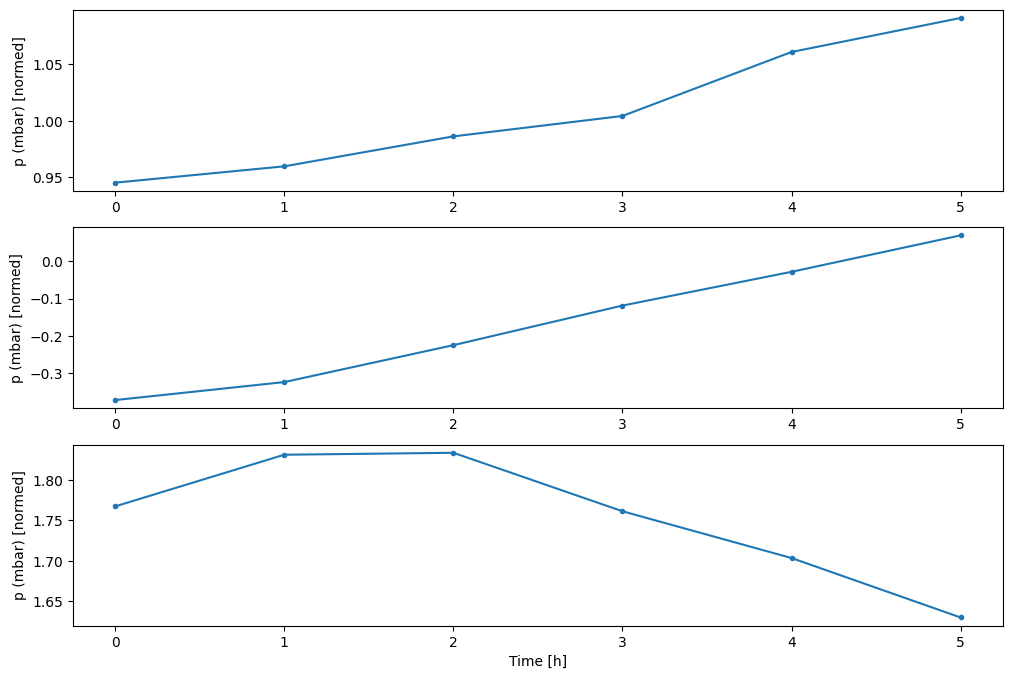


There are some good explanation about the concept of LSTM: check out the blog made by Christopher Olah, 2015 and the one made by Michael Nguyen, 2018 for Understanding the intuition of LSTM Networks. The Long Short – Term Memory (LSTM) is a RNN architecture that developed to overcome the vanishing gradient problem. We will see that it suffers from a fundamental problem (vanishing /exploding gradient) if we have a longer time dependency. A simple recurrent neural network works well only for a short-term memory. In other words, they can retain state from one iteration to the next by using their own output as input for the next step. In Feed Forward Neural Network we describe that all inputs are not dependent on each other or are usually familiar as IID (Independent Identical Distributed), so it is not appropriate to use sequential data processing.Ī Recurrent Neural Network (RNN) deals with sequence problems because their connections form a directed cycle. WARNING:matplotlib.image:Clipping input data to the valid range for imshow with RGB data ( for floats or for integers).Time series involves data collected sequentially in time. WARNING:tensorflow:Using a while_loop for converting ImageProjectiveTransformV3 cause there is no registered converter for this op. WARNING:tensorflow:Using a while_loop for converting StatelessRandomUniformV2 cause there is no registered converter for this op. WARNING:tensorflow:Using a while_loop for converting Bitcast cause there is no registered converter for this op. WARNING:tensorflow:Using a while_loop for converting RngReadAndSkip cause there is no registered converter for this op. Image = tf.cast(tf.expand_dims(image, 0), tf.float32)Īugmented_image = data_augmentation(image) Layers.RandomFlip("horizontal_and_vertical"), data_augmentation = tf.keras.Sequential([ Let's create a few preprocessing layers and apply them repeatedly to the same image. You can use the Keras preprocessing layers for data augmentation as well, such as tf. and tf. Verify that the pixels are in the range: print("Min and max pixel values:", result.numpy().min(), result.numpy().max()) You can visualize the result of applying these layers to an image. If instead you wanted it to be, you would write tf.(1./127.5, offset=-1). Note: The rescaling layer above standardizes pixel values to the range. Resize_and_rescale = tf.keras.Sequential([ You can use the Keras preprocessing layers to resize your images to a consistent shape (with tf.), and to rescale pixel values (with tf.). Use Keras preprocessing layers Resizing and rescaling You should use `dataset.take(k).cache().repeat()` instead. This can happen if you have an input pipeline similar to `dataset.cache().take(k).repeat()`. In order to avoid unexpected truncation of the dataset, the partially cached contents of the dataset will be discarded. 02:38:41.776821: W tensorflow/core/kernels/data/cache_dataset_ops.cc:856] The calling iterator did not fully read the dataset being cached. Let's retrieve an image from the dataset and use it to demonstrate data augmentation. (train_ds, val_ds, test_ds), metadata = tfds.load( If you would like to learn about other ways of importing data, check out the load images tutorial.
#Tensorflow time series generator download
For convenience, download the dataset using TensorFlow Datasets. This tutorial uses the tf_flowers dataset. If you would like to use Nvidia GPU with TensorRT, please make sure the missing libraries mentioned above are installed properly. 02:38:35.373466: W tensorflow/compiler/tf2tensorrt/utils/py_:38] TF-TRT Warning: Cannot dlopen some TensorRT libraries. 02:38:35.373455: W tensorflow/compiler/xla/stream_executor/platform/default/dso_:64] Could not load dynamic library 'libnvinfer_plugin.so.7' dlerror: libnvinfer_plugin.so.7: cannot open shared object file: No such file or directory 02:38:35.373345: W tensorflow/compiler/xla/stream_executor/platform/default/dso_:64] Could not load dynamic library 'libnvinfer.so.7' dlerror: libnvinfer.so.7: cannot open shared object file: No such file or directory
#Tensorflow time series generator how to
You will learn how to apply data augmentation in two ways: This tutorial demonstrates data augmentation: a technique to increase the diversity of your training set by applying random (but realistic) transformations, such as image rotation.


 0 kommentar(er)
0 kommentar(er)
